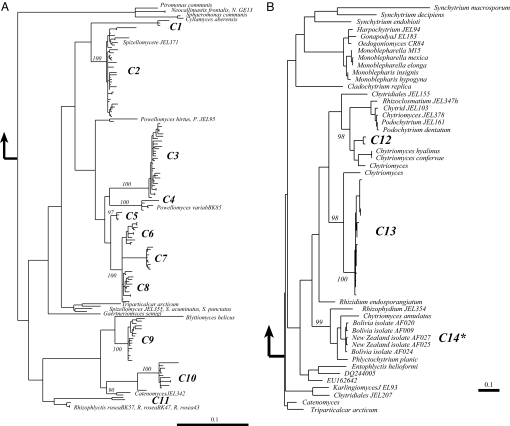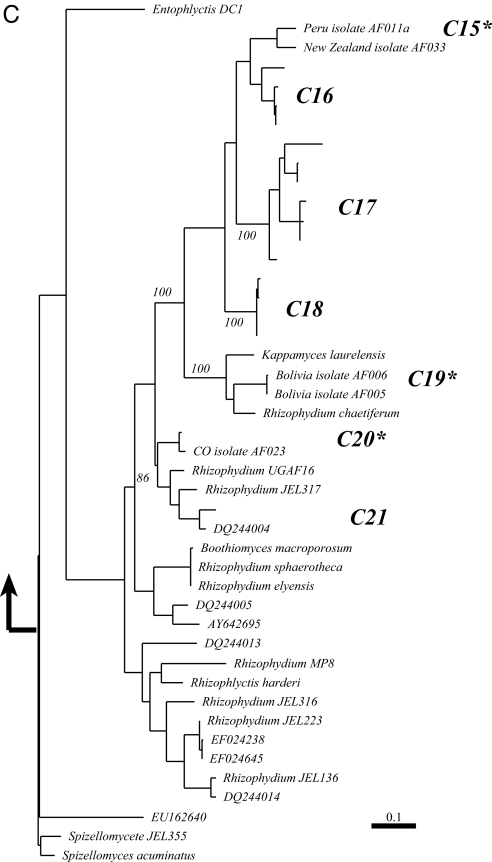Fig. 2.
Inferred phylogenetic relationships of sequences obtained from cultures and clone libraries in the present study compared to the known diversity of major groups of chytrids. (A) shows clades C1–C11; sequences in these clades are most closely related to the orders Spizellomycetales and Rhizophlyctidales. (B) clades C12–C14, sequences in these clades are most closely related to the order Chytridiales. (C) clades C15–C21; sequences in these clades are most closely related to the order Rhizophydiales. Black arrows indicate where on the tree the other groups of chytrids attach. An overview of how the major groups of chytrids link to one another is presented in Fig. S1. Bootstrap values are indicated at nodes above 90%; numbered clades had bootstrap support of at least 90% and/or branch lengths of subtending clades long enough to warrant separate discussion (>1% sequence evolution). An asterisk indicates those clades that include a cultured isolate reported in this study.


